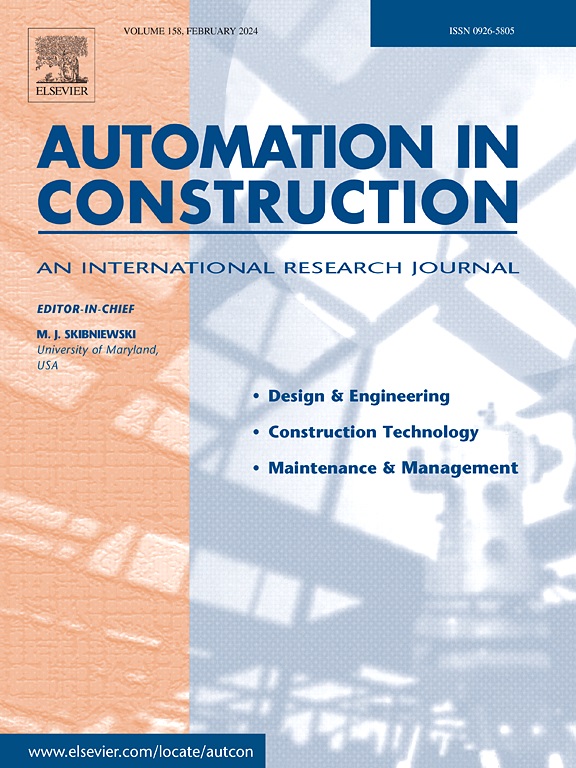Digital twin model for analyzing deformation and seepage in high earth-rock dams
IF 9.6
1区 工程技术
Q1 CONSTRUCTION & BUILDING TECHNOLOGY
引用次数: 0
Abstract
Digital twin technology is vital in hydraulic engineering for real-time visualization, performance analysis, and risk management of water infrastructure systems. This paper proposes a digital twin model for deformation and seepage analysis of high earth-rock dams, integrating deep learning with the Finite Element Method (FEM). Key contributions include a sensor-based monitoring point model with time-variant update and extrapolation capabilities and a point-to-domain model that achieves full-domain monitoring predictions from point-level monitoring by learning the node relationships generated by FEM using neural networks and dynamic monitoring loss functions. Applied to a 186-m dam, the model achieves an average error of 3.17 %, improving deformation prediction accuracy by 19.44 % and simulation accuracy by 64.42 %. This approach facilitates real-time monitoring, predictive analysis, and early warnings, making it a powerful tool for hydraulic engineering safety. Future work will focus on exploring three-dimensional high-precision modeling and advancing data fusion techniques.
求助全文
约1分钟内获得全文
求助全文
来源期刊

Automation in Construction
工程技术-工程:土木
CiteScore
19.20
自引率
16.50%
发文量
563
审稿时长
8.5 months
期刊介绍:
Automation in Construction is an international journal that focuses on publishing original research papers related to the use of Information Technologies in various aspects of the construction industry. The journal covers topics such as design, engineering, construction technologies, and the maintenance and management of constructed facilities.
The scope of Automation in Construction is extensive and covers all stages of the construction life cycle. This includes initial planning and design, construction of the facility, operation and maintenance, as well as the eventual dismantling and recycling of buildings and engineering structures.
 求助内容:
求助内容: 应助结果提醒方式:
应助结果提醒方式:


